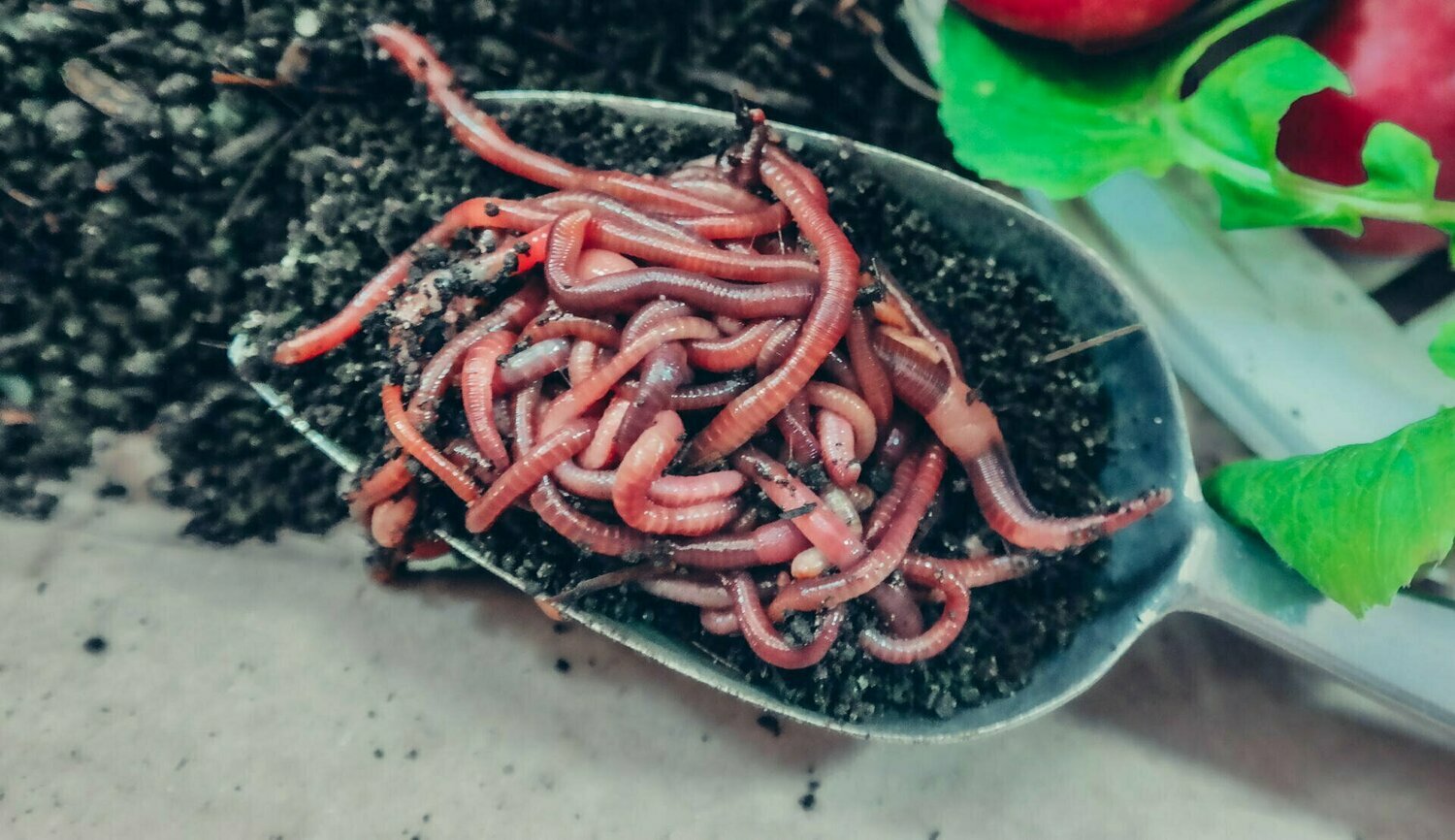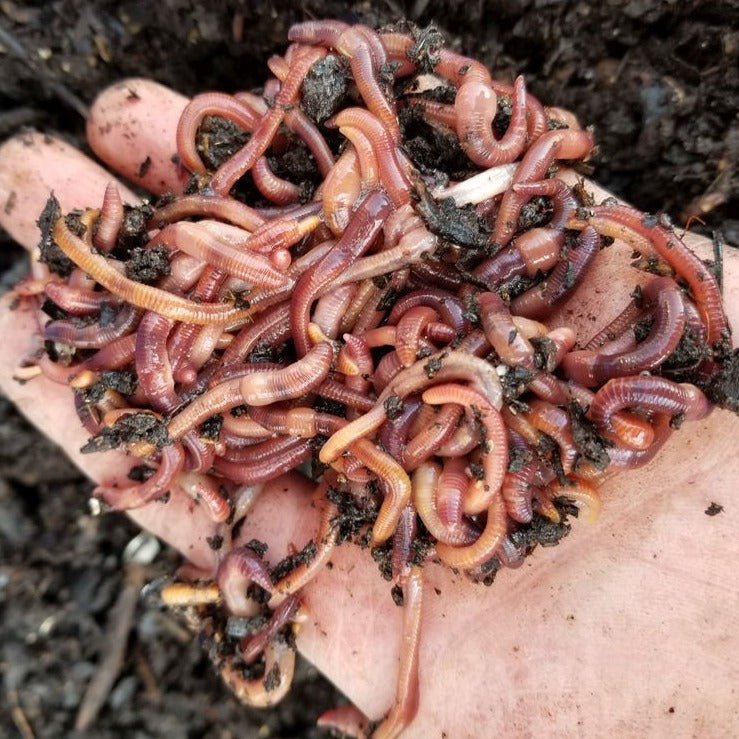Taking Advantage Of the Power of Red Wiggler Composting: An In-Depth Take A Look At the Environmental and Agricultural Advantages of This All-natural Waste Reduction Method
The practice of red wiggler composting stands for an engaging junction of ecological stewardship and farming technology, using a lasting option to the expanding difficulties of waste monitoring and dirt degradation. Through the all-natural procedure of vermicomposting, natural waste is transformed right into an important source that not only enriches soil but additionally adds to a substantial decrease in land fill payments and greenhouse gas emissions. As we explore the diverse benefits of this approach, we uncover how it can improve farming methods and advertise eco-friendly understanding, triggering a more detailed examination of its potential effect on our neighborhoods and communities.
What Are Red Wiggler Worms?
Red wiggler worms, medically referred to as Eisenia fetida, are a species of earthworm particularly adapted for composting and natural waste breakdown. These worms flourish in the nutrient-rich environment of breaking down raw material, making them perfect for vermicomposting systems. Growing to a size of around three to four inches, red wigglers are defined by their reddish-brown coloration and distinctive banding patterns along their bodies.
Unlike various other earthworm types, red wigglers favor to occupy the top layers of dirt and natural particles, where oxygen levels are higher and food sources are abundant. Their physiological adaptations permit them to refine natural materials effectively; they have a well-developed gastrointestinal system that allows them to transform waste right into nutrient-rich castings, typically referred to as "black gold" in gardening and agricultural contexts.
Eisenia fetida plays an important role in the ecosystem by promoting the decay procedure, improving dirt structure, and advertising microbial task. Given their unique attributes and ecological value, red wiggler worms have ended up being a central element in lasting waste management practices and natural gardening initiatives, adding dramatically to ecological health.
Advantages for Dirt Health
The addition of red wiggler worms in composting systems provides significant benefits for soil wellness. These worms play a critical duty in the decay process, breaking down organic matter right into nutrient-rich vermicompost. This natural plant food enhances dirt framework, aeration, and water retention, contributing to an extra desirable setting for plant growth.
Vermicompost is abundant in necessary nutrients such as nitrogen, potassium, and phosphorus, which are crucial for plant advancement (Red Wiggler Composting). The visibility of valuable bacteria in vermicompost further promotes dirt health by enhancing nutrient accessibility and subduing soil-borne pathogens. This dynamic interaction fosters a robust soil ecosystem that sustains lasting agricultural techniques
Additionally, red wigglers assist in the development of humus, a stable organic matter that improves dirt fertility and strength. This increased organic material not just boosts dirt texture however likewise improves its capability to sequester carbon, mitigating environment adjustment influences.
Including red wiggler composting right into farming systems can, therefore, bring about much healthier dirts, greater crop returns, and enhanced sustainability. Because of this, accepting this all-natural waste reduction method can yield profound advantages for both the setting and agricultural productivity.
Effect On Waste Decrease
Incorporating red wiggler worms into composting systems dramatically minimizes waste, transforming natural products that would certainly otherwise add to land fills into useful compost. This approach, referred to as vermicomposting, successfully refines kitchen scraps, lawn waste, and other biodegradable materials, leading you can try this out to a considerable decrease in the quantity of waste sent out to landfills. According to the Epa, natural waste makes up a substantial part of garbage dump materials, creating damaging greenhouse gases as it breaks down anaerobically.
By using red wigglers, a highly reliable composting agent, households and services can draw away a substantial quantity of natural waste from these garbage dumps. Each extra pound of red wigglers can process and eat about half a pound of organic waste daily, causing an exceptional decrease in overall waste generation.
Moreover, the application of vermicomposting assistances regional waste management efforts and advertises a circular economic climate, where waste is transformed into a resource. As areas significantly embrace this practice, the advancing result on waste reduction becomes evident, fostering a more sustainable setting and motivating accountable waste administration techniques. Welcoming red wiggler composting not only alleviates waste problems but also enhances neighborhood recognition concerning sustainable living.
Enhancing Agricultural Practices
Utilizing red wiggler worms in farming methods can dramatically improve dirt wellness and crop efficiency. These browse around this web-site worms play an essential function in the composting procedure, damaging down natural matter into nutrient-rich vermicompost. This natural plant food enhances dirt aeration, water, and framework retention, which are important for durable plant development.
Additionally, the castings created by red wigglers are rich in essential nutrients, such as potassium, nitrogen, and phosphorus, promoting healthier plants with higher yields. The microbial activity promoted by these worms likewise adds to a successful dirt community, raising biodiversity and resilience versus conditions and parasites.

In addition, using vermicompost can improve dirt pH levels, making nutrients a lot more available go to my blog to plants. Red Wiggler Composting. Therefore, farmers can cultivate much healthier crops while all at once contributing to soil preservation initiatives, eventually creating a much more lasting agricultural future
Beginning With Composting
The key ingredient in red wiggler composting is natural waste, which can consist of cooking area scraps, yard waste, and paper items. This equilibrium cultivates an optimum setting for red wigglers, which are the crucial microorganisms in this composting technique.
Choosing an ideal composting system is just as vital. Worm containers can be created for interior or outdoor use, and they should supply appropriate water drainage and oygenation. It is encouraged to begin with a handful of worms-- about one extra pound of red wigglers for each one extra pound of waste created once a week.

Final Thought

The technique of red wiggler composting stands for an engaging junction of environmental stewardship and farming advancement, supplying a lasting service to the expanding obstacles of waste monitoring and soil deterioration.Additionally, the application of vermicomposting supports local waste administration efforts and advertises a circular economic situation, wherein waste is transformed right into a source. As neighborhoods significantly embrace this technique, the cumulative effect on waste decrease ends up being evident, cultivating a much more sustainable setting and motivating accountable waste management practices. The key ingredient in red wiggler composting is natural waste, which can consist of cooking area scraps, lawn waste, and paper items.In recap, red wiggler composting presents a sustainable option for organic waste administration, producing nutrient-rich vermicompost that significantly improves soil wellness.